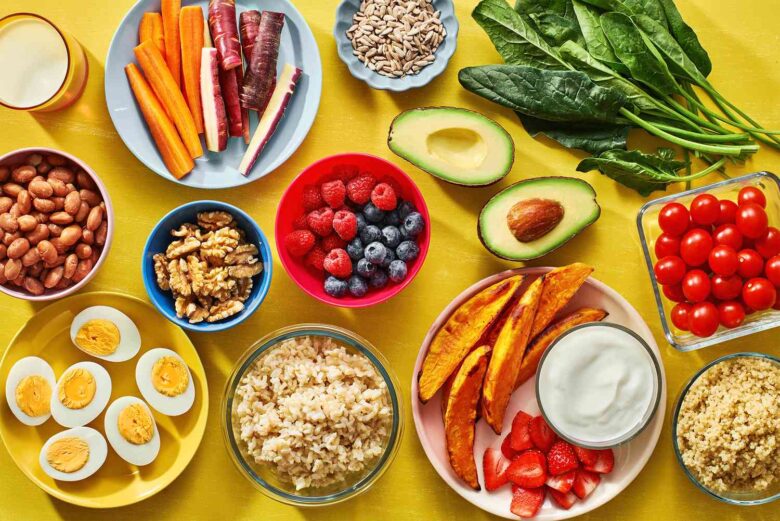It can feel like an uphill battle to serve meals that are both healthy and that your kids will be excited to eat. Picky eaters, busy schedules, and the allure of fast food or sugary snacks can make mealtimes a challenge for parents trying to provide proper nutrition. But the good news is, with a few tweaks and some creativity in the kitchen, it’s entirely possible to create meals that strike the perfect balance between nutrition and kid-friendliness. Read on for strategies and ideas to make meals stress-free and nutritious while bringing smiles to your children’s faces.
Why Nutrition Matters
Growing children need the right nutrients to fuel their development. Proper nutrition helps them build strong bones, develop their brains, and have sustained energy throughout the day. Unfortunately, many processed foods marketed to kids are loaded with sugar, unhealthy fats, and empty calories that leave them hungry and irritable. Choosing nutritious ingredients doesn’t just improve their physical health; it also positively impacts their mood, focus, and academic performance. The goal then becomes feeding your kids meals that are as nourishing as they are appealing.
Involve Your Children
One surefire way to get your kids more excited about what’s on their plate is to actively involve them in meal prep. Kids love to feel like they have a say in what they eat, and even something as simple as letting them choose a vegetable for dinner can make a big difference. Consider inviting them to join you for grocery shopping and seek their input when planning meals. Getting them involved in tasks like stirring, sprinkling toppings, or cutting soft fruits (with proper age-appropriate supervision) helps create a sense of ownership. When they see the finished meal, they’re more likely to take pride in what they helped create and are therefore likelier to eat it.
Sneak in Veggies
Kids often struggle to accept vegetables, yet there are numerous methods to incorporate this crucial food group into meals without compromising their flavor. A classic trick is blending veggies into sauces—for example, pureeing carrots, spinach, or zucchini into spaghetti sauce. You can also bake shredded zucchini or carrots into muffins and pancakes. For snacks, consider kale chips seasoned lightly or homemade sweet potato fries. Over time, you’ll introduce these flavors in subtle ways that might make kids more inclined to accept them in their raw or roasted form. Remember, consistency is key.
Healthy Twists on Favorites
Rather than overhauling your menu and introducing new meals, consider incorporating healthier variations into your children’s favorite dishes. For instance, instead of frozen chicken nuggets, try baking your own with lean chicken and whole-grain bread crumbs. Swap out white pasta for a whole-grain or chickpea-based alternative. If pizza night is a tradition, use whole-grain dough and pile on the veggies with a bit of mozzarella cheese for a fun, homemade twist. These little changes retain familiarity while upgrading the nutritional content of familiar meals.
Snack Strategies
Healthy eating isn’t limited to main meals. Kids often crave snacks between meals, so it’s crucial to provide them with healthy options. Stock your pantry with options like sliced fruits, yogurt, nuts, or homemade granola bars. For fun, try creating “snack boards” featuring a mixture of cheese cubes, whole-grain crackers, sliced veggies with dip, and apple slices. The presentation can make these healthier options feel like a treat, and variety ensures they’re getting a beneficial balance of nutrients.
Mealtime Environment
How you structure mealtime plays a significant role in how your kids perceive food. Create a positive dining environment by making meals a time for family bonding, free from distractions like TV or smartphones. Encourage a relaxed atmosphere where trying new foods is rewarded but not forced, to avoid creating a power struggle. Keep portions manageable and offer seconds rather than overwhelming your child with a plate piled high. Consistency with mealtimes also establishes a routine that children find comforting, letting them know when to expect their next meal.
Hydration Habits
It’s easy to focus purely on food and forget about drinks, but hydration is just as critical, especially for kids with active lifestyles. Water is the best option, but if your kids need some variety, offer milk (or a fortified plant-based milk) or infuse water with slices of fruit for a naturally sweet flavor. Avoid sugary sodas and juices, as they’re full of empty calories and can spike blood sugar levels. Encourage your child to drink water with every meal, and make grabbing a water bottle on the way out the door a habit.
Meal Prep and Planning
Reducing the stress around family meals starts with planning ahead. Dedicate time during the weekend to pre-plan meals for the week. Batch cook staples like rice, grilled chicken, and roasted vegetables that you can quickly assemble into meals throughout the week. Portion out snacks like trail mix or cut-up fruits and veggies to have on hand. By having these healthy options ready to go, you can avoid the temptation of reaching for takeout or highly processed convenience foods on busy weekdays. A little prep goes a long way in setting your family up for healthy success.
Make Healthy Eating a Family Priority
When it comes to getting your kids to eat nutritious meals, remember that it’s about progress, not perfection. By making small, consistent changes, involving your kids, and keeping the environment fun and stress-free, you’ll build habits that last a lifetime. Healthy eating doesn’t have to mean sacrifice; it can be delicious, exciting, and inspire creativity for the whole family. Start with one or two tips from this guide, and you’ll soon see that it’s possible to raise happy eaters who genuinely enjoy the wholesome meals you’ve worked hard to prepare.
FAQs
1. How can I encourage my child to try new foods?
Offer small portions of new foods alongside familiar favorites. Encourage them to take just one bite, but avoid forcing it, as this can cause resistance.
2. What if my child refuses to eat vegetables altogether?
Start by sneaking veggies into their favorite meals, such as sauces or baked goods. Gradually increase their exposure and try serving them in different forms (e.g., raw, roasted, or blended into soups).
3. How often should kids eat during the day?
Most kids benefit from three balanced meals and two healthy snacks each day to maintain their energy levels and nutrient intake.
4. How can I balance healthy eating with occasional treats?
Promote balance by allowing occasional treats in moderation while focusing on consistency with wholesome meals and snacks.




